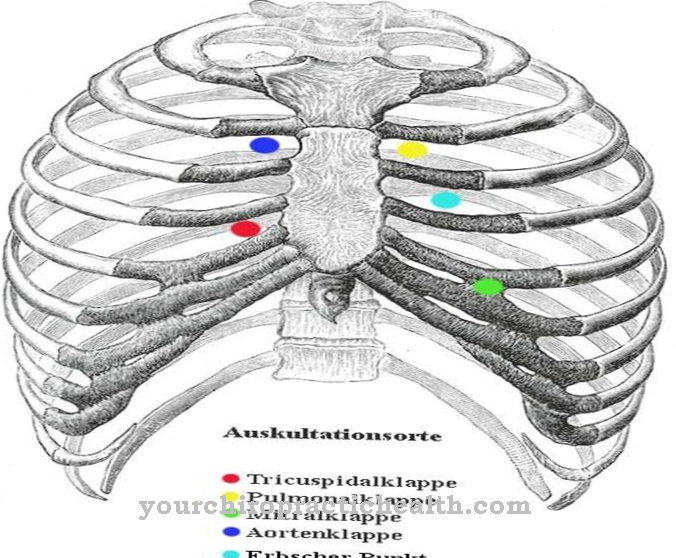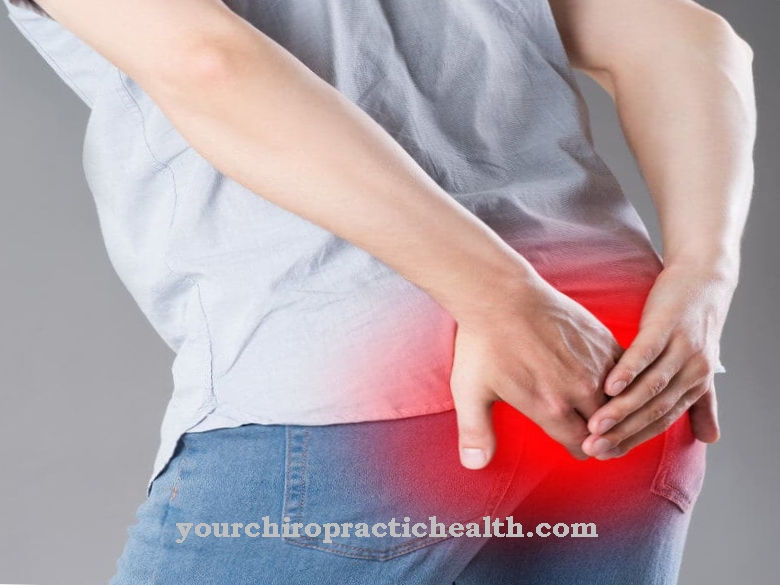At the Triceps it is the so-called Triceps brachii muscle, a muscle in the back of the upper arm. This muscle can stretch the forearm in the elbow joint. Both overuse and inactivity can cause triceps discomfort.
What is the triceps?
The German translation of colloquial as Triceps designated Triceps brachii muscle is the three-headed arm muscle. It belongs to the skeletal muscles and here to the group of the upper arm muscles. The triceps are the entire length of the back of the upper arm. Parts of the triceps run over two joints, the shoulder and the elbow.
Since it is an arm extensor muscle, it is also called a three-headed arm extensor. The antagonists or opponents of the arm extensors are the arm flexors. The term "three-headed" is based on the fact that the triceps consists of three muscle heads. Skeletal muscles are always attached to the skeleton or fascia via tendons in at least two places, the origin and the insertion.
With multiple origins, the muscle heads (Latin Caput) the different original parts of a muscle. The triceps has three original parts or three muscle heads that have a common attachment. The triceps are responsible for extending and rotating the forearm in the elbow joint.
Anatomy & structure
The three muscle heads of the triceps are the long head (Caput longum), the inner head (Caput mediale) and the side head (Caput laterale). The long head has its origin below the joint socket on the shoulder blade (scapula). It forms the lateral and medial axillary gaps. The axillary gaps are vascular and nerve tracts in the shoulder area. The caput mediale and the caput laterale have their origin on the posterior side of the upper arm bone (humerus). The three muscle heads converge to form a common, sinewy attachment at the olecranon. The olecranon is the bony end of the ulna (Ulna), one of the forearm bones. From here fibers radiate to the joint capsule of the elbow and to the forearm fascia.
The tendon of the triceps, which forms the insertion, begins in the middle of the muscle and is made up of two aponeuroses. Aponeuroses are connective tissue structures that serve as sinewy attachments to muscles. Of the two aponeuroses of the triceps, one covers the lower part of the muscle outwards, while the other extends deep into the muscle. There is a bursa under the triceps tendon that protects against excessive friction between the muscle and the bony olecranon.
Function & tasks
The triceps work together with the Anconeus muscleAlso known as the elbow or elbow hump muscle, an extension of the forearm in the elbow joint. The triceps also allow the arm to be drawn (adduction) over the shoulder joint to the body and the arm to be moved backwards (retroversion). The medial and lateral head are responsible for the extension.Adduction and retroversion can occur through the long head. Another function of the triceps is to fix the elbow joint. This prevents the arms from buckling when leaning on it and enables fine hand movements, such as when writing, for example. The triceps is the antagonist of the biceps, which in medical terminology is called the biceps brachii muscle and also belongs to the upper arm muscles, but is an arm flexor muscle.
Also, the triceps is an antagonist of the Brachial muscle, the upper arm muscle that lies behind the biceps on the outside of the upper arm. As the forearm flexes, the biceps contracts and the triceps extend. When stretching the forearm, it works in the opposite direction: the triceps contract and the biceps relax.In contrast to the heart muscles and the smooth muscles of the internal organs, the skeletal muscles, and thus also the triceps, can be moved deliberately and consciously. In addition to movement, skeletal muscles also stabilize joints such as the shoulder. The muscles also generate part of the body heat.
You can find your medication here
➔ Medicines for painIllnesses & ailments
Various complaints of various causes can occur in the triceps area. Drawing or burning pain along the entire back of the arm or stabbing, punctiform pain can occur as well as tension or restricted mobility. Pain can spread to the upper back and fingers. Slight swellings can also occur.
Causes for this can be external violence such as an accident or tendinitis. An inflammation of the triceps tendon occurs when the tendon rubs against the bone when it is overloaded (for example, due to heavy weights during strength training). Untreated tendinitis can develop into chronic inflammation. An under-exertion due to inactivity can lead to complaints, as can a strong overload.
Activities in which the arms are permanently held in front of the body, such as working at a desk or long car journeys, can lead to constant stretching of the long head. In the long term, this can lead to passive overloading of the triceps. In various sports, such as swimming, tennis or volleyball, active overload of the triceps can occur.
The so-called epicondylitis is the colloquial tennis elbow. Epicondylitis is not restricted to tennis players, but irritation of the tendons of the triceps is particularly common here. In strength training or bodybuilding, various exercises such as bench press or push-ups can put a lot of strain on the triceps. In rare cases when the triceps are subjected to extreme stress, muscle fiber tears can also occur, in which the muscle tissue tears.
























.jpg)



